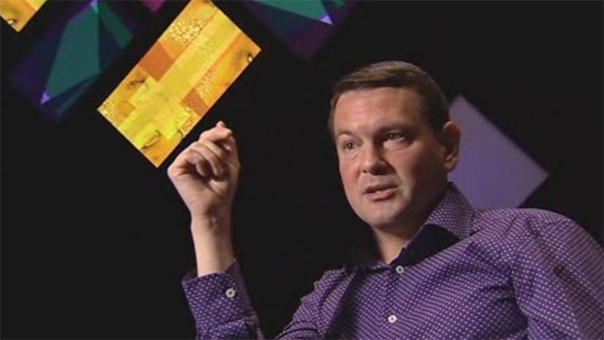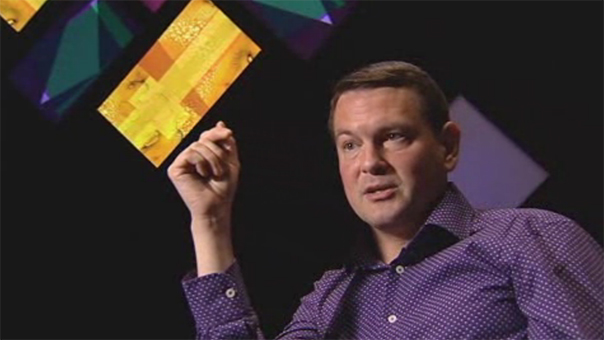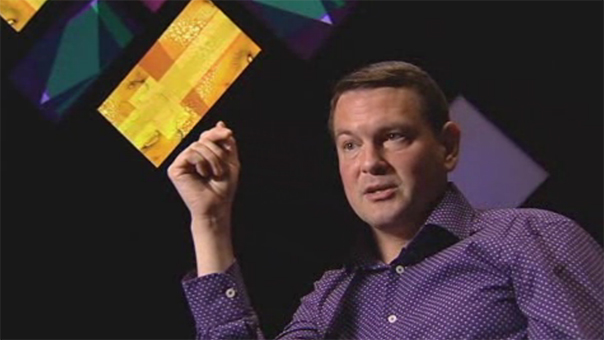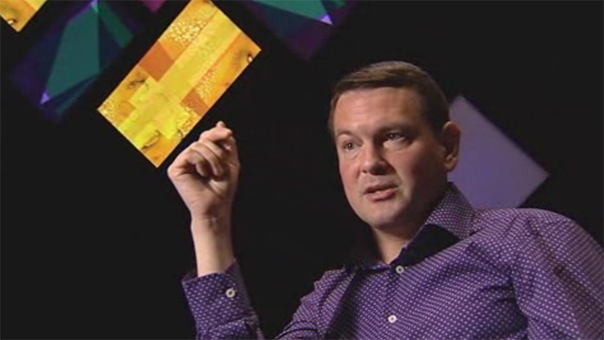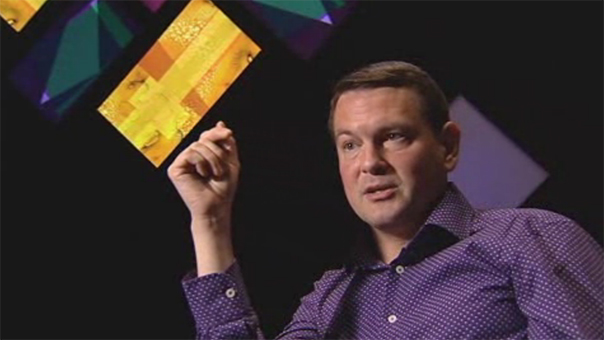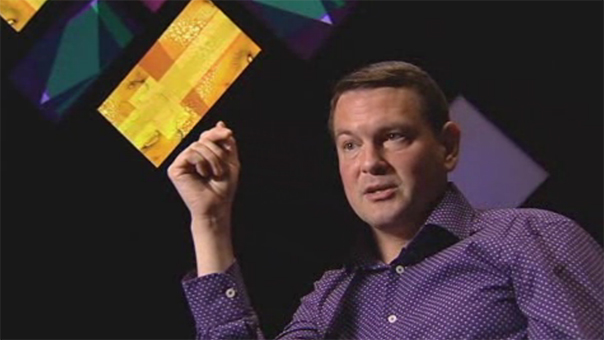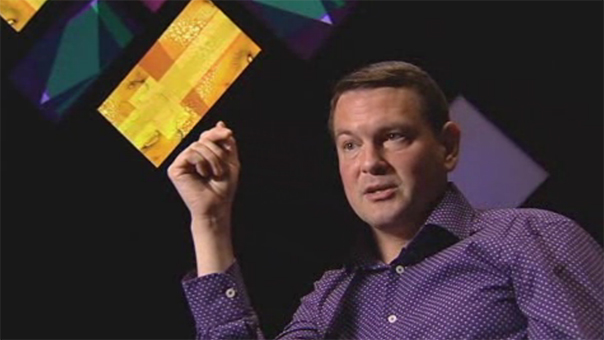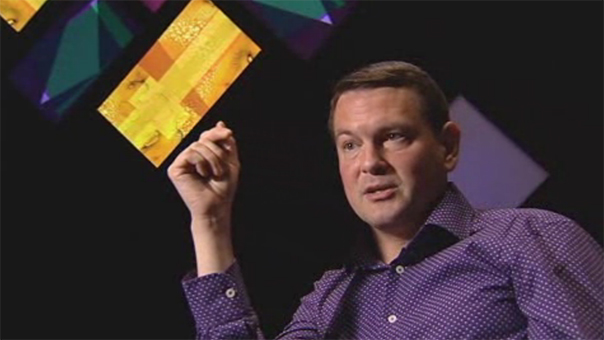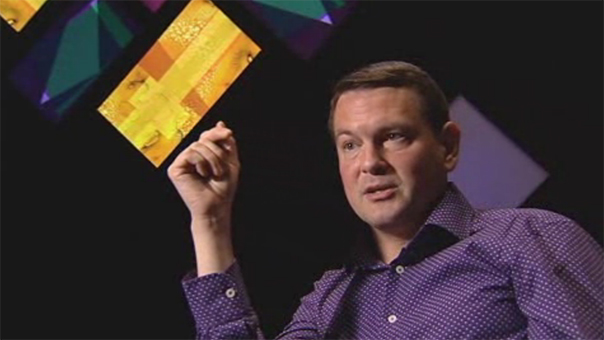77 Million Paintings: description
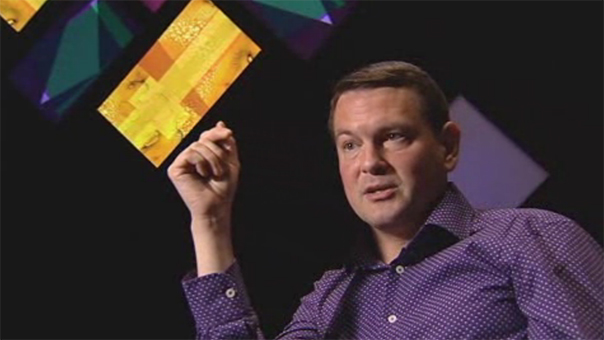
Viewing guide
In this video, Robertson describes 77 Million Paintings and talks about the concept behind it.
-
Think about a visual piece of work you’ve created. Describe what it looked like.
-
What was the concept behind your piece of work? Why did you create the work and what message were you trying to convey?
-
How does Robertson describe the visual component of 77 Million Paintings? Write the key phrases.
-
Do the key phrases describe visual as well as the soundscape components in 77 Million Paintings? Give reasons for your response.
-
Robertson describes 77 Million Paintings as an example of a generative installation. What does he say is one of the main concepts behind generative art?
-
Think about another multimedia installation, or a movie scene. Did the visual component connect with the concept? Explain in detail.
-
Do you think everyone who experienced 77 Million Paintings would describe it in the same way? Justify your response.
-
Eno used slides as the content for his generative artwork. If you were going to create a generative artwork, what other kinds of content could you use?
Interviewer: Hi Nick, thanks so much for coming in to talk to us today. How would you describe 77 Million Paintings and the concept behind it?
Nick Robertson: The way I generally describe it to someone who hasn’t seen it is as a very slowly moving secular stained-glass window. It’s in a very dark room and it looks like it’s floating and it is very highly formed, the arrangement of the monitors is very highly formed, but what’s happening inside is very free. So, when it’s moving slowly it’s almost imperceptibly changing and I often walk into certain rooms in which it’s playing and I think, “…that would look great in a church”. But of course it has no religious reference, it just has that feeling. The concept behind it spans back thirty years. Brian’s been doing generative installations for that long. Initially he would use a bank of projectors, you know industrial, really powerful projectors, and put all of the slides into carousels which were of different lengths so that the overlap would be different every time you saw it. Part of the main concepts behind generative art, and this piece in particular, it’s almost completely impossible to see the same thing twice because of the amount of combinations that are possible. With the old method of using slides I think it repeated itself after fourteen years of continuous play. With the software version it’s almost impossible to repeat itself, especially in a configuration where there are three versions running. So, the concept behind it is to create something that is very slowly moving so when you look at it, it could be a painting but then you look at it again and think ‘Oh, hang on, it’s changed a bit’ and then you look at it again and it’s completely different. In the initial software we had a speed control which would slow it down so you really, really couldn’t tell it was changing and it would change over a period of hours to a faster speed which was still slow, but it’s very difficult to notice that it’s changing.
